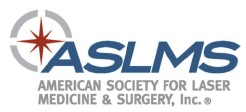 Laser resurfacing, also known as laser peel, corrects skin texture and signs of aging. Laser resurfacing removes the top layers so that smoother skin that looks younger and more vibrant forms with existing wrinkles and scars greatly minimized. Laser resurfacing can be performed over the entire face or in targeted areas where wrinkles amass such as the eyes and mouth. Laser resurfacing results are more dramatic and last longer than more superficial treatments. How Does Laser Resurfacing Work?
Laser resurfacing, also known as laser peel, corrects skin texture and signs of aging. Laser resurfacing removes the top layers so that smoother skin that looks younger and more vibrant forms with existing wrinkles and scars greatly minimized. Laser resurfacing can be performed over the entire face or in targeted areas where wrinkles amass such as the eyes and mouth. Laser resurfacing results are more dramatic and last longer than more superficial treatments. How Does Laser Resurfacing Work?
Laser Resurfacing at a Glance
How Does Laser Resurfacing Work?
Laser Resurfacing is performed by one of our physicians using what is known as CO2 or Feather Touch lasers which remove the upper layers of damaged skin. The skin is removed, layer by layer, until the appropriate level has been reached. During the healing process, new skin cells form that are smoother, tighter and younger looking.
What Does Laser Resurfacing Treat?
Laser resurfacing treats fine lines and wrinkles, scars, age spots, spider veins, stretch marks, tattoos, birthmarks, uneven pigmentation and precancerous growth. Because laser resurfacing actually removes the top layers of the skin results are more dramatic and last much longer than nonablative lasers or other treatments that do not remove old skin layers.
What Are Laser Resurfacing Treatments Like?
Treatment duration depends on the size of the treatment area, but most treatments last between 30 and 90 minutes. Mild sedation and topical anesthesia are used before the laser treatment begins. The laser is used to remove skin layers and targets the water in your skin cells which minimizes bleeding. The depth of the treatment is very controlled.
The healing process after the treatment can be as important as the procedure itself. Your treated skin will be bandaged and will require special antibiotic ointments to heal properly.
Does It Hurt and What Can Go Wrong?
Most laser resurfacing treatments use anesthesia, sometimes with sedation, so patients are relaxed and pain is minimized. Post treatment, patients experience mild swelling and discomfort that can be controlled with ice packs and medications prescribed by the physician.
All surgical procedures carry some risk, but under the care of a certified physician, risk of scarring, swelling, bruising and infection is low. It is important to tell your doctor if you have a current cold sore or herpes outbreak or if you recently experienced an outbreak before your procedure: herpes infections are dangerous after laser resurfacing and require vigorous treatment. Other complications include prolonged redness, uneven surfaces and changes in skin pigmentation.
What should I expect from Laser Resurfacing Treatment?
While Laser resurfacing treatment?s final results may take several months to fully see, after the initial pinkness fades patients will see a significant improvement in their skin. Laser resurfacing leaves the skin looking younger, tighter and smoother. After about two weeks make up can be used and it is important to protect your new skin with appropriate sunscreen.
For more information about Laser Resurfacing, we encourage you to call to schedule an in-office consultation 703-539-6002.




